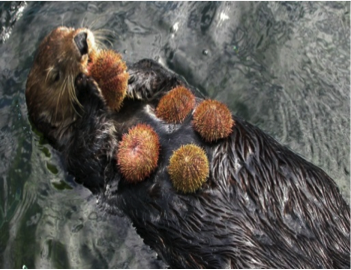Andy Rowe here, I evaluate sustainable development and natural resource interventions. I am convinced evaluation is facing a key adapt or decline juncture.
Connectivity is the mechanism enabling us to understand how interventions reach to the public interest and effects in the natural system. Our siloed governance approaches come from cost and accountability structures in the for-profit sector. For-profits recognize the importance of connections to the larger mission and judges performance accordingly; now in the mission includes sustainability. Major corporations such as Mars and WalMart are acting decisively to ensure sustainable supply chains, which they judge essential to survival of their businesses. We need to begin the process of incorporating sustainability into evaluation.
The story of how domesticated cats contribute to climate change illustrates how obscure but important these causal connections can be.
 Lesson Learned: Domesticated cats living with humans, and feral cats are a significant predator of songbirds taking an estimated 40% annually. Birds carry a parasite Toxoplasma gondii. The unharmful parasite departs in stools, often in litter, which ends up in landfills. Landfills are often connected to the sea via groundwater and streams and the parasites enter coastal waters where bivalves ingest them. Sea otters love bivalves ingesting the parasite, which attacks the otter brains. Poor otters.
Lesson Learned: Domesticated cats living with humans, and feral cats are a significant predator of songbirds taking an estimated 40% annually. Birds carry a parasite Toxoplasma gondii. The unharmful parasite departs in stools, often in litter, which ends up in landfills. Landfills are often connected to the sea via groundwater and streams and the parasites enter coastal waters where bivalves ingest them. Sea otters love bivalves ingesting the parasite, which attacks the otter brains. Poor otters.
Another system connects with our story. Fertilizer and waste from sewage treatment and other sources deliver nutrients to the sea causing algal growth in the water that weaken sea grasses. Otters address the effects of excessive nutrient loading on grasses keeping the sea grasses alive. Sea grasses are amazingly effective at storing carbon – with the help of otters Pacific sea grasses store the equivalent of annual carbon dioxide emissions from 3 to 6 million cars.
So, cats contribute to climate change via mechanisms that are far from transparent. As evaluators we need to attend to the connections from the intervention to important effects, including effects in the natural system. By tracing connectivity within and across systems, evaluation can play an important role in ensuring that interventions are designed and undertaken so that the world we leave for our grandchildren is at least as good as the world we inherited. It is time that sustainability becomes an expected element in evaluation. Several years ago the National Academy of Science gave sustainability science a room of its own –time now for sustainability to become a required element in our Standards.
Lesson Learned: Take a look at sustainability in the for-profit sector: 1. Mars Corporation here and here and 2. Walmart here.
Rad Resources: Otters and weeds:
- Cat parasite ‘is killing otters’
- Wikipedia article on the Sea Otter
- Marine Sea Otters being affected by Toxoplasmosis
Also, see Sustainability Science Room of Its Own by William C. Clark (2007).
The American Evaluation Association is celebrating Environmental Program Evaluation TIG Week with our colleagues in the Environmental Program Evaluation Topical Interest Group. The contributions all this week to aea365 come from our EPE TIG members. Do you have questions, concerns, kudos, or content to extend this aea365 contribution? Please add them in the comments section for this post on the aea365 webpage so that we may enrich our community of practice. Would you like to submit an aea365 Tip? Please send a note of interest to aea365@eval.org. aea365 is sponsored by the American Evaluation Association and provides a Tip-a-Day by and for evaluators.

Really excellent discussion! When I was working on my BA, I took a graduate level class in Bush (Sr.) Administration Foreign Policy and wrote a paper tracing Bush’s roles in life and the baggage he carried forward from each. Every event in this world is formed by its antecedents and understanding of that event is rooted in understanding how it developed and its influences/influencers. On the other hand, there is also beauty and illumination in resting in the present moment without glancing backward or forward. Right brain/left brain/whole brain.